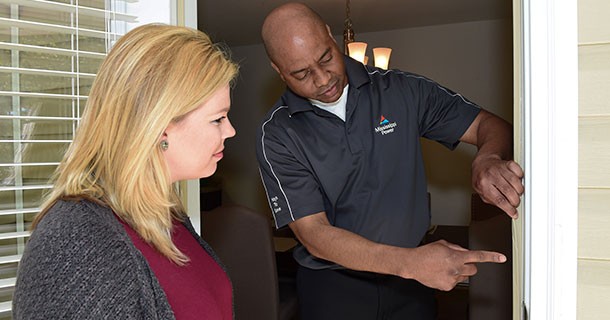Charging at Home
The level of charging that you need depends on the type of vehicle you purchase as well as the number of miles you drive on a daily basis.
To begin, you need to select the type of vehicle that fits your lifestyle. Look at the various technologies and choose the car that works best for you. When making your decision, don't forget to include federal incentives that will help you fit your new car into your budget. Next, you may need to equip your garage for the appropriate type of charging.
Equipping Your Garage
Determine the type of charging needed - Level 1 or Level 2.
The level of charging that you need depends on the type of vehicle you purchase as well as the number of miles you drive on a daily basis.
Both level 1 and level 2 charging use the same standard charging plug, known as J1772. Mississippi Power worked with the Society of Automotive Engineers and other utilities to help develop the standard so that all vehicles can operate with all charging stations.
Look at the graph below to compare the hours needed for charging for the different types of vehicles using both level 1 and level 2. Notice that the Toyota Prius and the Chevy Volt both top out on electricity usage due to the size of the battery.
Today's plug-in electric vehicles can be charged from a standard 120-volt outlet, available in every home. Level 1 charging typically doesn't require you to make changes to your electric panel or home wiring. A buyer can purchase a car, drive it home and charge it in a typical home outlet. Mississippi Power recommends using a dedicated circuit to ensure that your circuit is not overloaded.
If you want to charge your car faster, use a 240-volt circuit, similar to the one for your dryer. Level 2 charging requires an "Electric Vehicle Supply Equipment" device, which enhances safety. Because of the higher voltage, a permit and inspection may be required for home installation. The cost for installation depends on upgrades, line runs, and the type of equipment, or Electric Vehicle Supply Device installed.
Contact a qualified independent electrician for costs, and permitting and inspection requirements. The electrician will let you know if you have adequate capacity in your panel and will add a new circuit if needed.

Assumes 68% efficiency of Level 1 chargers using 1.44 kW
Assumes 85% efficiency of Level 2 Chargers using 3.3 kW
Assumes 1 kWh = 3.4 miles based on EPA estimates

Assumes 68% efficiency of Level 1 chargers using 1.44 kW
Assumes 85% efficiency of Level 2 Chargers using 3.3 kW
Assumes 1 kWh = 3.4 miles based on EPA estimates
Multifamily Homes
The majority of charging will likely occur at home. If you live in an apartment building or in a condo, we recommend that you begin discussions with your property management or your homeowners association.
For more information on the different types of Plug-In Vehicles visit GoElectricDrive.
Electric Vehicle FAQ
Questions or concerns about EV ownership? You'll find answers for almost any question in our Electric Vehicle FAQ.



